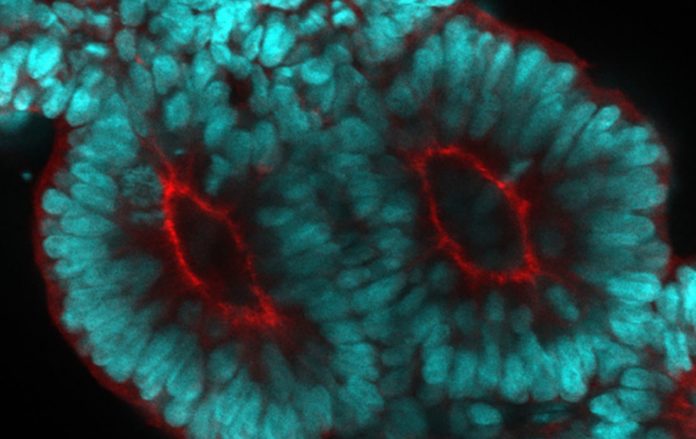For the first time, EMBL Barcelona scientists show how the cellular structures that give rise to our spinal column form sequentially.
In all vertebrates, the spinal column is the main supporting element of the skeleton. It protects the spinal cord and nerve roots as well as providing a location for muscles to attach.
Rare hereditary disorders are known to be caused by defects in its development. Researchers from EMBL Barcelona’s Ebisuya Group have developed a 3D in vitro model that simulates how the precursor structures that give rise to the spinal column evolve during human embryonic development.
The spinal column is made up of 33 vertebrae that create somites, which are precursor structures. Somites are responsible for the formation of our vertebrae, ribs, and skeletal muscles. Somatic development is strictly regulated to ensure that these structures are created appropriately, and each pair of somites emerges at a specific moment of development. The segmentation clock, a set of genes that generates rhythmic waves, controls this process, with each wave resulting in the formation of a new pair of somites.
The researchers used this method to create a 3D in vitro model of human somite production, often known as ‘somitogenesis.’
Somitogenesis: a robust process
The researchers used a mixture of signaling molecules to stimulate cell differentiation in human induced pluripotent stem cells (hiPSC). The cells began to elongate and form anterior (top) and posterior (bottom) axes three days later. The scientists then added Matrigel to the culturing mixture. Matrigel is a protein mixture that is crucial to numerous developmental processes, and is dubbed the “magic powder” by some scientists. Somitoids – in vitro equivalents of human somite precursor structures – were formed as a result of this procedure.
The researchers looked at the expression patterns of HES7, the key gene involved in the process, to see if the segmentation clock regulates somitogenesis in these somitoids. They discovered oscillations, particularly as somitogenesis was ready to begin. The somites that formed displayed distinct epithelization markers, which is an essential step in their maturation.
Somite size is very important.
When it comes to embryonic development, the Ebisuya group investigates how and why humans vary from other species. The segmentation clock is one of the model systems they employ to investigate interspecies differences. The researchers discovered in 2020 that the human segmentation clock oscillation period is longer than the mouse segmentation clock.
The recent research also discovered a relationship between somite size and the segmentation clock.
“The somites that were generated had a constant size, independently of the number of cells used for the initial somitoid. The somite size did not increase even if the initial cell number did.” explains Marina Sanaki-Matsumiya, first author of the study published in Nature Communications, adding “This suggests that the somites have a preferred species-specific size, which might be determined by local cell-cell interactions, the segmentation clock, or other mechanisms.”
Miki Ebisuya and her colleagues are currently going to cultivate somitoids from various species and compare them in order to learn more about this. The researchers are already working on a’stem cell zoo’ in the lab with numerous mammalian species, including rabbits, cattle, and rhinoceroses.
“Our next project will focus on creating somitoids from different species, measure their cell proliferation and cell migration speed to establish what and how somitogenesis is different among species,” adds Ebisuya.
Image Credit: EBISUYA GROUP/EMBL
You were reading: New study reveals surprising fresh insight about origins of the human spine
